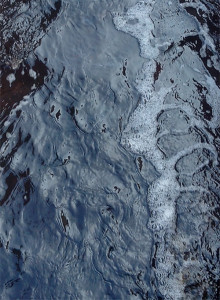Governor’s Mark Dayton called his first Water Summit at the Intercontinental Saint Paul Riverfront Hotel, to focus public attention on how to clean drinking water and other supplies. The summit is held on Saturday, dated 27.02.2016. More than 800 individuals, including water quality experts, members of the public, local leaders, farmers, legislators, regulators, the business community, and a wide variety of other stakeholders were gather to talk to the serious challenges facing Minnesota’s water supplies – in both rural and urban areas of the state. Dayton arranges the water summit because of several reports indicated that a lot of southwest Minnesota water is not safe and sound for drinking or recreation. Moreover, the Minnesota Pollution Control Agency reported that 60 percent of groundwater wells in the central sands area have high nitrate concentrations. This water is not a safe drinking water.
All through the day, the Summit participants discussed water-quality challenges and brainstormed potential solutions, so that water crisis of this state should not turn into as bad as Flint and Michigan.
In the mean time, a small group of people joined him at stage in the ballroom, holding banners that said, “Love water not oil”. They also criticize Dayton not to invite tribes in the summit and for supporting oil pipelines across sensitive lands and wet lands in northern Minnesota. Although he invited the tribe leaders to attend the summit but they did not send representatives. The protesters (Environmentalists and some tribal groups) left the place quietly when Dayton agrees to meet with them after his speech. The pipeline would runs across the Lake Superior and the Mississippi River that are the great freshwater sources in the world.
In water summit, they discussed different Breakout Session topics such as aquatic invasive species, challenges facing Minnesota’s iconic waters, ensuring the state is resilient to extreme weather, sustaining clean water supplies, water in the urban and built environment, water and wastewater infrastructure, water in the rural environment, living cover and investing in clean water.
Some of the points that are discussed or suggested:
- In this state agricultural runoff is the significant factor that impact on water quality. Different nitrogen and phosphorous fertilizers are used in farmlands; these chemicals are washout and go to water bodies and polluted the water.
- Simple change to farming practices can have a big strength on using less fertilizer, pesticides and herbicides.
- It needs to improve communications with farmers and others Minnesotans.
- The farmers are well known that what to do better than anybody else on their own farmlands to Minnesota’s water.
- As the soils are different across Minnesota, hence, to prevent pollution from chemicals farmers should to need different solutions.
- Safe drinking water and other supplies water efforts need to be balanced so that farmers and the environment both benefit.
- Conservation practices can decrease runoff.
- The governor plans to ask lawmakers for funds for communities, chiefly small ones in rural areas, to make safe drinking water.
- Potential solutions discussed included keeping more green cover plants on farm fields and other lands for more of the year instead of leaving the soil vulnerable to erosion.
- How can manage stormwater runoff best way in urban areas where rooftops and pavement speed polluted water to lakes and rivers?
Clean drinking water challenges could not be solved with one water summit, it should be discussed effectively in many water summits. The governor already decided to set aside an April week to highlight safe drinking water needs to Minnesotans.

